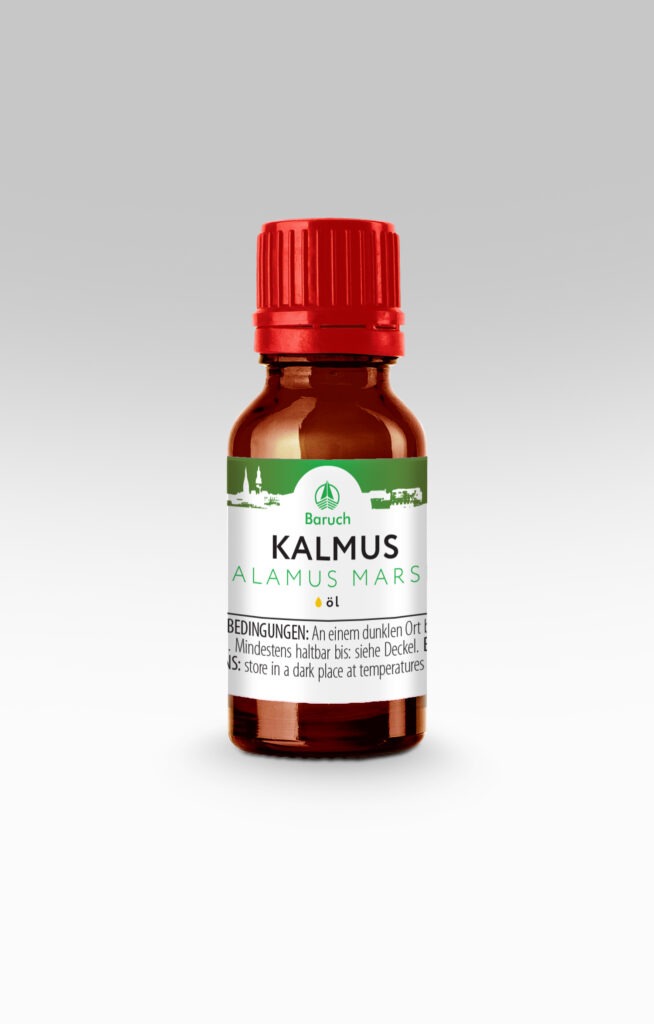Sweet flag (also called Acorus calamus, sway or muskrat root, among many common names) is a species of flowering plant with psychoactive chemicals. It is a tall wetland monocot of the family Acoraceae, in the genus Acorus. The rhizome of this swamp plant is used as a useful raw material for obtaining medicinal substances, spices, and as an ingredient in cosmetics.
In official medicine, sweet flag is part of drugs for the treatment of gastric ulcer (with localization of the ulcer both in the stomach and in the duodenum), hyperacid gastritis and a number of other diseases of the gastrointestinal tract. In folk medicine, preparations from the sweet flag rhizome are used to treat colds, toothache, to heal ulcers of the mucous membrane and scurvy. Extracts were used as tonics, gout, rheumatism and inflammation were treated with the help of sweet flag rhizome oil – it has a strong bactericidal and antifungal effect.
The CO2 extract from sweet flag and the essential oil from its rhizome are often used as a spice in the kitchen. Sweet flag CO2 extract has a very strong aroma. Diluting the extract with oil creates a delicate, spicy aroma reminiscent of the scent of a rose. The taste of sweet flag CO2 extract is tart, somewhat similar to the taste of a spice made from a mixture of bay leaf, ginger and cinnamon. CO2 extract can be recommended for the production of confectionery, alcoholic beverages and some types of beer, it is excellent for products of the fish canning industry. In the form of oil solutions and microemulsions, CO2 extract can be recommended for the preparation of soups, broths, sauces, roasted meat and vegetables. CO2 extract from sweet flag can be used as a flavor additive in the preparation of candied melon or pumpkin.
Sweet flag CO2 extract is a dark yellow to brown viscous liquid with a pungent, camphor-like odor and a burning taste. When diluted, the smell and taste change and get completely different notes.


Chart 1. Main components of CO2 extract from sweet flag
| NAME | CONTENT IN% OF THE AMOUNT OF VOLATILE COMPONENTS | EFFECT |
|---|---|---|
| Thymol | Tracheal relaxant, disinfectant, anthelmintic, painkiller. | |
| Alpha and beta pinenes | Locally irritating, antiseptic, expectorant, diuretic. | |
| Menthol | Antiseptic, anesthetic, against skin irritations. | |
| Cineole | expectorant, disinfectant, analgesic, antiseptic. | |
| Linalool | Anticonvulsant, antispasmodic, bactericidal. | |
| Carvacrol | Bactericidal, fungicidal. | |
| Methyl eugenol | Calming, antispasmodic, antitussive. | |
| Terpineol | expectorant, bactericidal, antiallergic, antiasthmatic. | |
| Borneol | Antiarrhythmic, analgesic, anti-inflammatory, antipyretic. | |
| Anethole | Expectorant, stimulates stomach function. | |
| Carvone | Nervous system stimulator. | |
| Bornyl acetate | expectorant. | |
| Valeric acid | Antispasmodic, sedative. | |
| Camphor | Vasoconstrictor, antiseptic, antispasmodic, sedative, anti-inflammatory, local irritant, cardiac stimulant. |
In cosmetics, CO2 extract from sweet flag can be recommended as an ingredient to activate capillary blood circulation in the skin. CO2 extract is recommended for use in the formulations of the following skin and hair care products:
– in anti-inflammatory and healing creams for oily, particularly sensitive skin;
– in skin tonics;
– in masks for the scalp to strengthen hair;
– in masks for the scalp to activate the hair cuticle, increase hair density and stimulate hair growth;
– in products to combat dandruff and seborrhea;
– in oral care products with antibacterial and deodorizing effects
The sweet flag plant was brought to Europe during the Tatar-Mongol invasion. Genghis Khan’s and Batu Khan’s troops widely used the sweet flag rhizome as an anesthetic, bactericide, and medicinal, and adopted this use from the Chinese. In addition, sweet flag rhizome powder was used in ancient China and India as a means of disinfecting stagnant water, and it was also prescribed to plant sweet flag rhizomes along the shores of reservoirs to purify the water within.
Chart 2. Application rates, recommendations for use and storage of CO2 extracts
| Food usage rates | The recommended range of use for the most popular 10% oil solutions of CO2 extracts among technologists in the cosmetic industry (item A10 according to our internal classification) is 0.05-0.5% of the mass of the finished product (0.5-5 g / kg or 0.5-5 kg/ton). For extracts from solutions of other concentrations (A1-A100), the application rates must be recalculated proportionately. |
| Recommendations for use | It is recommended to add CO2 extracts in the final stages of preparation, in the cooling phase of the end product. |
| Storage Instructions | It is recommended to store CO2 extracts in a closed container in a cool room and avoid direct sunlight. |
| Use in dietary supplements | Application in cooking | Application in cosmetics |
| For medicinal purposes, it is used to a limited extent, mainly for baths, inhalations, compresses, to fight infections on the surface of the skin and mucous membranes. | It can be added to confectionery, pastries, in the preparation of jams, fruit jams with a slightly pronounced inherent aroma. It is used as a flavoring for various alcoholic and non-alcoholic drinks and cocktails. | Helps fight against scaly and irritated skin, nourishes and moisturizes dry skin, evens out its color, treats eczema and dermatitis, reduces or completely eliminates the appearance of stretch marks on the skin, helps to preserve the skin’s youthfulness, prevents the appearance of Wrinkles and vascular patterns on the face, lightens with the possibility of completely eliminating age spots. Refreshes the skin, saturates it with moisture, tones and softens it, restores skin firmness and elasticity. |
